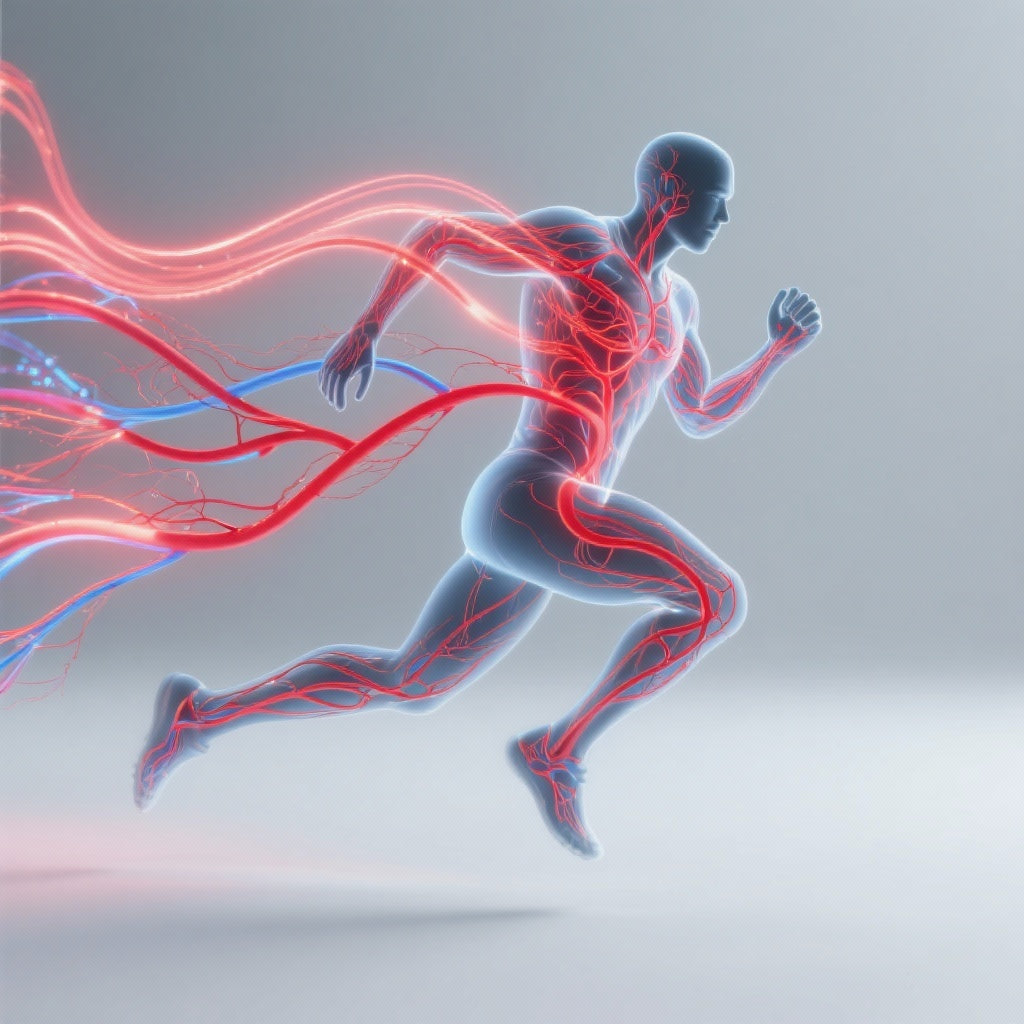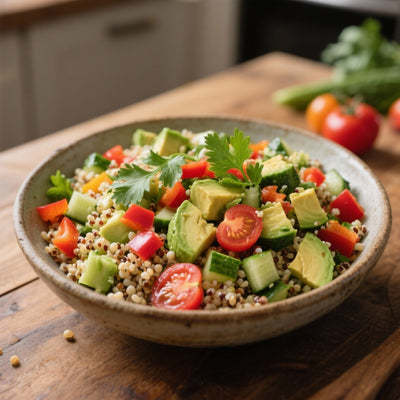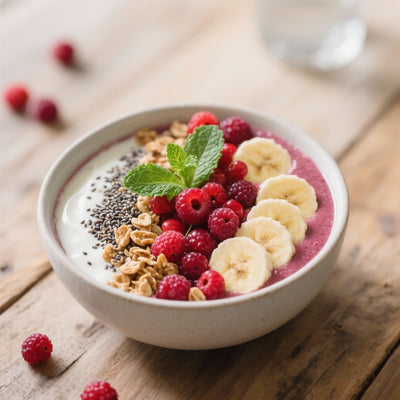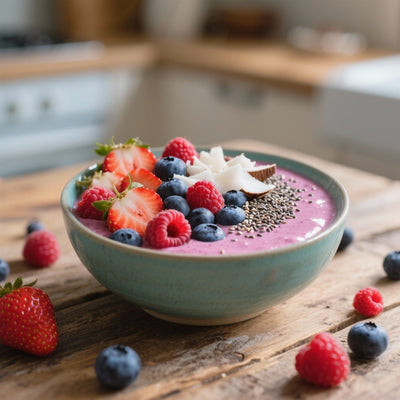How to improve blood circulation for better performance
Do you often feel tired, with cold hands and feet, or do you struggle to recover after exercise? These symptoms, often dismissed, can be signs of suboptimal blood circulation. Far from being a mere physiological detail, blood flow is the true engine of our vitality, energy, and performance, whether physical or cognitive. Good circulation is key to delivering oxygen and nutrients to every cell in your body, while simultaneously removing metabolic waste.
In this comprehensive guide, we'll delve into concrete, natural strategies to revitalize your circulatory system. Forget miracle cures and discover sustainable, science-based habits, from diet and exercise to everyday lifestyle tips. Get ready to unlock a new level of well-being and performance.
Why is good blood circulation the cornerstone of your performance?
Imagine a perfectly smooth highway network, where delivery vehicles (your red blood cells) reach their destinations without traffic jams, bringing their precious cargo (oxygen and nutrients) exactly where it's needed. That's how a healthy circulatory system works. It's the silent foundation of our overall health.
The vital role of the circulatory system
Your cardiovascular system is much more than just a pump. It is responsible for:
- Tissue oxygenation: Essential for energy production in muscles and the brain.
- Nutrient transport: Vitamins, minerals and glucose are transported to nourish your cells.
- Elimination of toxins: The blood transports waste products such as carbon dioxide and lactic acid to the organs of elimination.
- Regulating body temperature: By adjusting blood flow to the skin.
- Immune defense: It transports white blood cells to fight infections.
Signs of poor blood circulation
The symptoms of poor circulation are often subtle and can include cold hands and feet, muscle cramps, persistent fatigue, difficulty concentrating (brain fog), swelling of the extremities (edema), or slow wound healing. Recognizing these signs is the first step to taking action.
"Optimal circulation is not just the absence of disease, it is the active presence of vitality and energy." - Dr. Alix Martin, Sports Cardiologist.
Active strategies: Move to circulate
The most direct and effective way to boost your circulation is through physical activity. Movement forces the heart to pump harder and blood vessels to dilate, creating a beneficial "cleansing" effect for the entire system.
Cardiovascular exercise: the engine of the system
Running, swimming, cycling, or even brisk walking are your best allies. Aim for at least 30 minutes of moderate-intensity activity, 5 days a week . This type of exercise strengthens the heart muscle, improves the elasticity of arteries, and promotes the creation of new blood vessels (angiogenesis).
Bodybuilding: more than just muscles
Muscle strengthening plays a crucial role. When muscles contract, they compress the surrounding veins, helping to propel blood back to the heart. This is known as the "muscle pump." Incorporating two to three strength training sessions per week can significantly improve your venous return, particularly in the legs.
Stretching and yoga: flexibility for fluidity
Yoga stretches and postures do more than just relieve tension. They improve circulation by decompressing areas where blood vessels might be constricted. Inverted postures, such as the shoulder stand or simply putting your legs up against a wall, are particularly effective for relieving heavy legs and promoting venous return.
Nutrition for the health of your arteries
What you eat has a direct impact on the health of your blood vessels and the fluidity of your blood. A targeted diet can be an extremely powerful tool for this.
Foods that are champions of blood flow
Incorporate these superfoods into your routine for healthy arteries:
- Leafy green vegetables and beets: Rich in nitrates, which are converted into nitric oxide in the body, a powerful vasodilator.
- Berries and citrus fruits: Packed with flavonoids, antioxidants that protect blood vessels and improve their function.
- Oily fish (salmon, mackerel): Their omega-3s help reduce inflammation and prevent the formation of clots.
- Garlic and onion: Contain sulfur compounds that promote vasodilation and thin the blood.
- Dark chocolate (>70%): Its polyphenols stimulate the production of nitric oxide.
For creative ideas, explore our recipe blog , where we often incorporate these beneficial ingredients.
Hydration: a simple but crucial step
Blood is more than 50% water. Even mild dehydration thickens the blood, forcing the heart to work harder and slowing circulation. Make sure you drink enough water throughout the day, about 1.5 to 2 liters, adjusting the amount according to your activity level.
Lifestyle habits: the daily actions that make a difference
Your circulatory performance also depends on your overall lifestyle. Several factors can sabotage your efforts if you don't pay attention to them. Adopting a healthy lifestyle is fundamental.
Stress management: a silent enemy of your ships
Chronic stress releases cortisol, a hormone that, in the long term, can damage the walls of blood vessels and cause them to constrict. Practice relaxation techniques such as meditation, heart coherence, or deep breathing to counteract these harmful effects.
Avoid sedentary behavior in the office
Sitting for hours is disastrous for circulation, especially in the legs. The golden rule: get up every 30 to 60 minutes. Walk around, stretch, do some squats. Consider using a standing desk or holding walking meetings whenever possible.
FAQ: Your questions about blood circulation
How long does it take to improve circulation?
The benefits can be felt quickly. After just one exercise session, circulation is temporarily improved. With consistent lifestyle changes, significant improvements can be seen in 4 to 8 weeks, such as increased energy and reduced feeling of cold.
Are dietary supplements effective?
Some supplements can help, but they are never a substitute for a healthy lifestyle. Plant extracts such as ginkgo biloba, red vine, or horse chestnut are known to support venous circulation. Always consult a healthcare professional before starting any supplementation.
Are varicose veins always a sign of poor circulation?
Yes, varicose veins are a visible sign of venous insufficiency, a type of circulatory disorder. They indicate that the valves in the leg veins are not functioning properly, causing blood to stagnate. This is a clear sign that it's time to take action.
Conclusion: Your circulation, your performance capital
Improving your blood circulation isn't a complicated quest, but rather a series of small, daily actions. By combining regular physical activity, a diet rich in protective nutrients, and healthy lifestyle habits, you give your body the tools to function at its full potential. It's a direct investment in your energy, mental clarity, and longevity.
Never underestimate the power of optimal blood flow. It's the foundation upon which all performance is built. Start incorporating one or two of these tips today and feel the difference. For more wellness information, feel free to browse our main blog .











